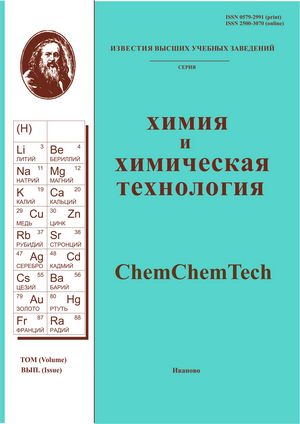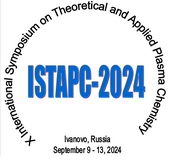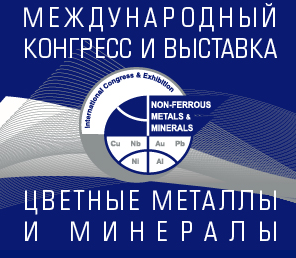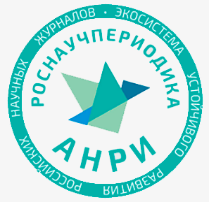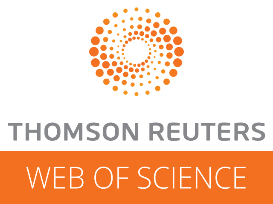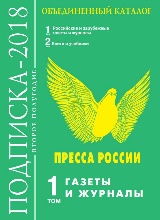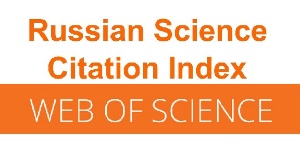ВЛИЯНИЕ ВЫСОКОМОЛЕКУЛЯРНЫХ СОЕДИНЕНИЙ РАЗЛИЧНОЙ ПРИРОДЫ НА ЭФФЕКТИВНОСТЬ ОЧИСТКИ МАТОЧНОГО РАСТВОРА ПРОИЗВОДСТВА СУЛЬФАТА МАГНИЯ ОТ ПРИМЕСЕЙ Fe3+, Al3+ И Cr3+ МЕТОДОМ ЭЛЕКТРОФЛОТАЦИИ
Аннотация
Исследовано влияние флокулянтов и поверхностно-активных веществ различной природы на процесс очистки маточного раствора MgSO4 от примесей Fe3+, Al3+ и Cr3+ методом электрофлотации. Исследование направлено на увеличение выхода сульфата магния путем возвращения очищенного маточного раствора в голову процесса на стадию кислотного разложения серпентинитомагнезита. В экспериментах использовались модельные растворы с концентрацией MgSO4 – 100 г/л, содержание ионов Fe3+ – 50 мг/л, Al3+ – 10 мг/л и Cr3+– 10 мг/л. Определено, что все примеси при корректировке рН переходят в малорастворимые соединения при значениях 6 – 7. Для проведения процесса очистки MgSO4 методом электрофлотации установлена оптимальная объемная плотность тока, которая составляет 0,4 А/л. Продолжительность проведения электрофлотационной очистки 30 мин. При изучении влияния поверхностно-активных веществ катионного, анионного, неионного и амфотерного типов на процесс очистки MgSO4 методом электрофлотации установлено, что степень извлечения примесей Fe3+, Al3+ и Cr3+ не превышает 10 – 30%, исключением является присутствие амфотерного поверхностно-активного вещества, при котором степень извлечения Fe3+ составляет 77 – 78%. Установлено, что наибольшая эффективность извлечения примесей Fe3+, Al3+ и Cr3+ из раствора MgSO4 достигается в присутствии анионного флокулянта Praestol 2540. При использовании этого флокулянта степень извлечения по всем компонентам достигает 98-99% уже на десятой минуте проведения процесса. Таким образом, очистка MgSO4 от примесей Fe3+, Al3+ и Cr3+ методом электрофлотации в присутствии анионного флокулянта Praestol 2540 позволит возвращать очищенный маточный раствор в начало процесса на стадию сернокислотного разложения серпентинитомагнезита при производстве сульфата магния, что позволит повысить выход продукта.
Для цитирования:
Иншакова К.А., Бродский В.А., Рудаковская Е.Г. Влияние высокомолекулярных соединений различной природы на эффективность очистки маточного раствора производства сульфата магния от примесей Fe3+, Al3+ и Cr3+ методом электрофлотации. Изв. вузов. Химия и хим. технология. 2024. Т. 67. Вып. 4. С. 72-79. DOI: 10.6060/ivkkt.20246704.6923.
Литература
Perederin Yu.V., Usol'tseva I.O., Krasnoshchekova D.V. The main technologies for obtaining magnesium ox-ide from serpentinite. Polzunov. Vestn. 2019. N 2. P. 123-127 (in Russian). DOI: 10.25712/ASTU.2072-8921.2019.02.024.
Osadchenko I.M., Lyabin M.P., Romanovskova A.D. Magnesium oxide: properties, methods of preparation and application (analytical review). Prirodn. Syst. Resursy.. 2018. V. 8. N 3. P. 5-14 (in Russian). DOI: 10.15688/nsr.jvolsu.2018.3.1.
Sagarunyan S.A., Arustamyan A.G., Agamyan E.S, Nazaryan E.M., Sagarunyan A.S. Investigation of the processes of complex processing of serpentinites. Tr. Kol'sk. Nauch. Tsentra RAN. 2018. V. 9. N 2-1. P. 187-191 (in Russian). DOI: 10.25702/KSC.2307-5252.2018.9.1.187-191.
Gabdullin A.N., Katyshev S.F., Nikonenko E.A., Vajtner V.V. Autopsy of serpentinite with nitric acid. Sat. tr. Vseros. Scientific and practical conf. Student., asp. and young. uch. with international the plot. "Energy and re-source conservation. Energy supply. Non-traditional and renewable energy sources. Nuclear energy". V. 2. Yekaterinburg: UrFU. 2015. P. 30-33. (in Russian).
Dormeshkin O.B., Gavrilyuk A.N., Vorob'ev N.I., Cherches G.Kh. Obtaining a water-soluble fertilizer of magnesium sulfate from dolomite. Tr. BGTU N 3. Khim. Tekhnol. Neorg.V-v. 2016. N 3 (185). P. 60-68 (in Russian).
Gavrilyuk A.N., Dormeshkin O.B., Cherches G.H. Physico-chemical features of acid decomposition of do-lomite. Izv. Nats. Akad. Nauk Belarusi. Ser. Khim. Nauk. 2021. V. 57. N 1. P. 109-118 (in Russian). DOI: 10.29235/1561-8331-2021-57-1-109-118.
Machula V.A. Technology for the production of magnesium sulfate. Mater. VIII Rep. Scientific and practical conf. Young. teacher and student. BNTU "Engineering and pedagogical education in the XXI century". Minsk: BNTU. 2012. Part 1. P. 73-76 (in Russian).
Shiroyan D.S., Gromova I.V., Elzhirkaev R.A. Study of the possibility of processing serpentinite-magnesite raw materials of the Khalilovsky deposit for magnesium sulfate. Usp. Khim. Khim. Tekhnol. 2014. V. 28. N 5 (154). P. 122-125 (in Russian).
Petlin I.V., Pankova O.V. Investigation of the process of obtaining magnesium sulfate from serpentinite ores of the Khalilovsky deposit. V Mire Nauchnykh Otkrytiy. 2015. V. 66. N 6-1. P. 343-351 (in Russian). DOI: 10.12731/wsd-2015-6.1-343-351.
Gur'eva V.A. Features of the chemical and mineralogical composition of serpentinite technogenic raw materials of the Khalilovskoye deposit. Mater. All-Russian Scientific and Practical Conference "Multidisciplinary University as a regional center of education and science". Section 25 "Problems of university civil engineering education in the region: science and practice". Orenburg: GO OSU. 2009. P. 2038-2043. (in Russian).
Baiykin Yu.L., Karengina L.B., Baykenova Yu.G. The effectiveness of using magnesite as a magnesium and lime fertilizer. Agrarnoe Obraz. Nauka. 2013. N 3. P. 2-6 (in Russian).
Yang W., Zhang X., Wu L., Rensing C., Xing S. Shortterm application of magnesium fertilizer affected soil mi-crobial biomass, activity, and community structure. J. Soil Sci. Plant Nutrition. 2021. V. 21. P. 675-689. DOI: 10.1007/ s42729-020-00392-x.
Vengerova M.V., Vengerov A.S. Minerals and rocks. Ekaterinburg: UrFU. 2017. 132 p. (in Russian).
Dzhavadov G.A., Taranushich V.A. Testing of magnesium sulfate of various origins for the production of com-plex water-soluble fertilizers. Izv. Vyssh. Uchebn. Zaved. Sev.-Kavkaz. Reg. Tekhn. Nauki. 2021. N 4 (212). P. 72-76 (in Russian). DOI: 10.17213/1560-3644-2021-4-72-76.
Kolesnikov V.A., Il'in V.I., Kapustin Yu.I., Varaksin S.O., Kisilenko P.N., Kokarev G.A. Electroflotation technology of industrial wastewater treatment. M.: Khimiya. 2007. 304 p. (in Russian).
Kuokkanen V., Kuokkanen T., Rämö J., Lassi U. Re-cent Applications of Electrocoagulation in Treatment of Water and Wastewater - A Review. Green Sust. Chem. 2013. V. 3. N 2. P. 89-121. DOI: 10.4236/gsc.2013.32013.
Mohtashami R., Shang J.Q. Electroflotation for Treatment of Industrial Wastewaters: A focused review. Envi-ron. Proc. 2019. V. 6. P. 325-353. DOI: 10.1007/s40710-019-00348-z.
Ksentini I, M. Kotti M., Ben Mansour L. Effect of liquid phase physicochemical characteristics on hydrody-namics of an electroflotation column. Desal. Water Treat. 2014. V. 52. N 16-18. P. 3347-3354. DOI: 10.1080/19443994.2013.800279.
Kyzas G.Z., Matis K.A. Electroflotation process: A review. J. Molec. Liq. 2016. V. 220. P. 657-664. DOI: 10.1016/j.molliq.2016.04.128.
Azimi A., Azari A., Rezakazemi M., Ansarpour M. Removal of Heavy Metals from Industrial Wastewaters: A Review. ChemBioEng Rev. 2017. V. 4. N 1. P. 37-59. DOI: 10.1002/cben.201600010.
Pyae A., Kolesnikova O.Yu., Aung H.T., Kolesnikov V.A. Electroflotation extraction of a mixture of copper and zinc ions from aqueous solutions in the presence of NH3. ChemChemTech [Izv. Vyssh. Uchebn. Zaved. Khim. Khim. Tekhnol.]. 2021. V. 64. N 10. P. 119-124 (in Russian). DOI: 10.6060/ ivkkt.20216410.6322.
Kuzin E.N., Kruchinina N.E. Evaluation of effectiveness of use of complex coagulants for wastewater treatment processes of mechanical engineering. ChemChemTech [Izv. Vyssh. Uchebn. Zaved. Khim. Khim. Tekhnol.]. 2019. V. 62. N 10. P. 140-146 (in Russian). DOI: 10.6060/ivkkt.20196210.5939.
Malkova Yu.O., Brodskiy V.A., Kolesnikov V.A. Increase of lead (II) ions electroflotation extraction effi-ciency from water solutions in the presence of ions of aluminium (III) and iron (III) as a coagulant. Vestn. Mos-kov. Univ. Ser. 2. Khimiya. 2020. V. 61. N 2. P. 166-173 (in Russian).
Brodskiy V., Kolesnikov V., Malkova Yu., Gaydukova A. The effect of high-molecular compounds nature on the electroflotation removal of the metal compounds from electrolyte solutions. Sep. Purif. Technol. 2021. V. 279. P. 119689. DOI: 10.1016/j.seppur.2021.119689.
Brodskiy V.A., Gaydukova A.M., Kolesnikov V.A., Il'in V.I. pH effect on the physicochemical characteristics and efficiency of electroflotation extraction of slightly soluble iron subgroup metal compounds from aqueous solutions. Russ. J. Phys. Chem. B. 2017. V. 11. P. 673-679. DOI: 10.1134/ S1990793117040145.
Inshakova K.A., Brodskiy V.A., Kladovshchikova O.I., Yavorskiy A.R. The effect of surfactants on the effi-ciency of electroflotation extraction of poorly soluble compounds of iron (III), aluminum (III) and chromium (III) from a technological solution of magnesium sulfate. Innovative materials and technologies: mater. Internation-al scientific- Tech. conf. Young. UC. Minsk: BSTU. 2022. P. 430-433 (in Russian).
Inshakova K.A., Brodskiy V.A., Kladovshchikova O.I., Yavorskiy A.R. The effect of flocculants on the effi-ciency of electroflotation extraction of poorly soluble compounds of iron (III), aluminum (III) and chromium (III) from a technological solution of magnesium sulfate. Science, innovation and technology: from ideas to inter-nal. Mater. International scientific- practical conf. Kom-somolsk-on-Amur: KNAU. 2022. P. 312-314 (in Rus-sian). DOI: 10.17084/978-5-7765-1502-6-2022-312.
Xiao F., Zhang X., Ma J. Indecisiveness of electrophoretic mobility determination in evaluating Fe (III) coagulation performance. Sep. Purif. Technol. 2009. V. 68. N 2. P. 273-278. DOI: 10.1016/j.seppur.2009.06.001.
Kolesnikov V.A., Gubin A.F., Kolesnikova O.Y., Perfil’eva A.V. Raising the efficiency of electroflotation pu-rification of wastewater formed in production of printed-circuit boards to remove copper ions in the presence of complexing agents, surfactants, and flocculants. Russ. J. Appl. Chem. 2017. V. 90. N 5. P. 732-737. DOI: 10.1134/S1070427217050111.
Staszak K., Wieczorek D., Michocka K. Effect of Sodium Chloride on the Surface and Wetting Properties of Aqueous Solutions of Cocamidopropyl Betaine. J. Surfactants Deterg. 2015. V. 18. N 2. P. 321-328. DOI: 10.1007/s11743-014-1644-8.
Skender A., Moulai-Mostefa N., Tir M. Effects of operational parameters on the removal efficiency of nonionic surfactant by electroflotation. Desal. Water Treat. 2010. V. 13. N 1–3. P. 213-216. DOI:10.5004/dwt.2010.992.

